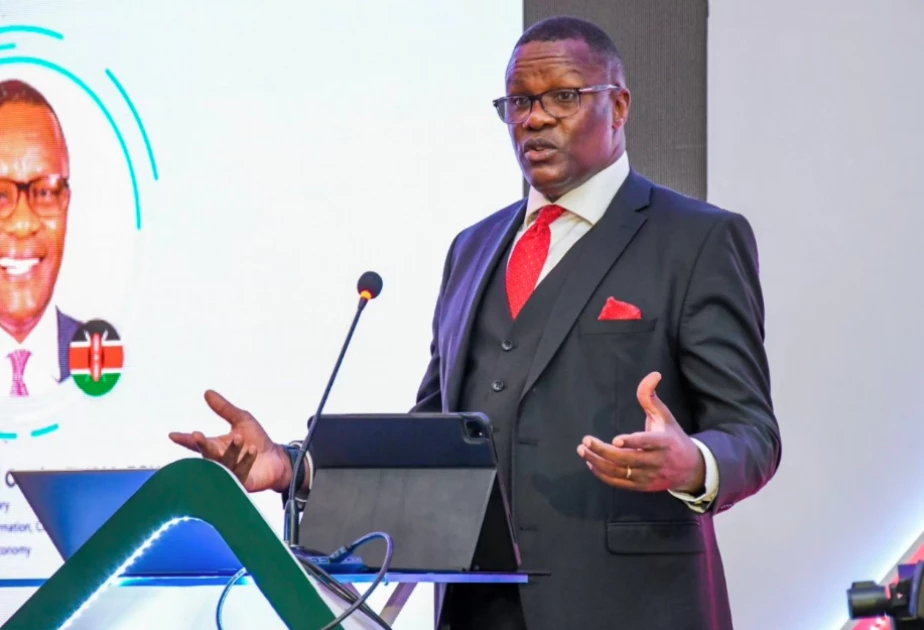Government introduces new funding system that ties allocation to performance

Eliud Owalo during a past function. PHOTO | COURTESY

Audio By Vocalize
The Deputy Chief of Staff for Performance and Delivery Management in the Executive Office of the President, Eliud Owalo, has announced the government’s new move to enhance ministerial funding.
In a statement on Wednesday, Owalo noted Ministries, Departments,
and Agencies (MDAs) that significantly contribute to the national development
agenda will receive increased funding, while underperforming entities risk
being phased out.
“Moving forward, we are going to tie performance management
and performance evaluation to reward management so that we allocate more money
to organizations that add more value to the government’s development agenda,”
said Owalo.
Owalo added that the new outlook will not favour underperforming
entities, noting they force the government to waste copious amounts of public
resources.
“The direction we are taking as a government is that we are
not going to have organizations that are perpetually underperforming continue
to be a drain on the exchequer. These organizations should be allowed to die
their natural deaths,” he added.
He highlighted the need for state agencies to innovate and be
self-sufficient, urging them to develop independent revenue streams rather than
relying solely on the exchequer.
Owalo was speaking to the National Water Harvesting and Storage Authority (NWHSA) leadership during a performance contract evaluation for the 2023/2024 fiscal year.
He also highlighted the need to invest in irrigation by harvesting excess rainwater and storing it for future use, stating that the nation cannot rely on rain-fed agriculture alone.
On his part, NWHSA Board Chairperson, Symon Kimaru cited
financial constraints, prolonged project timelines and limited fiscal space as
a major hurdle to their failed performance.
“It is not even possible to launch new projects due to
budgetary limitations,” Kimaru noted.
The evaluation will assess NWHSA's performance against key
indicators, including financial stewardship, fund absorption, service delivery,
dam construction and supervision, flood control measures, and water supply
enhancement.
Kenya faces chronic water scarcity, with 80% of the country
classified as arid or semi-arid as annual rainfall averages 630mm, ranging from
under 200mm in northern Kenya to over 1,800mm in Mount Kenya’s highlands.
The country's per capita water availability, estimated at
450 cubic meters in 2021, falls well below the global benchmark of 1,000 cubic
meters.
The National Water Master Plan projects a surge in water
demand to 47% of available resources by 2030, exacerbated by inadequate water
infrastructure and ineffective harvesting policies.
A 2023 UN report underscores global urgency, revealing that
26% of the world’s population lacks access to safe drinking water, while 46%
lack safely managed sanitation.
To address these challenges, NWHSA's 2023-2027 Strategic
Plan aims to boost national water storage by 125 million cubic meters through
key projects, including: Siyoi Muruny Dam (8.9 million cubic meters); Soin Koru
Dam (93 million cubic meters); Bosto Dam (18 million cubic meters); Umaa Dam
(1.5 million cubic meters); Badasa Dam (2.5 million cubic meters); and
Household rainwater harvesting for 100,000 households (1 million cubic meters).
Additionally, the Authority plans to construct 360 small
dams and pans (5.4 million cubic meters), drill 203 boreholes (16.24 million
cubic meters), and develop 196km of dykes and 45km of river draining
structures.
These measures will provide water for domestic, industrial,
and agricultural use, irrigating 22,000 acres to enhance food security.
The department says that through NWHSA, the government has completed several water
infrastructure projects, including Maruba Dam (Machakos), Sasumua Dam (serving
Nairobi), Kiserian Dam (Kajiado), Nakaetum (Peace) Dam (Turkana), Kalundu Dam
(Kitui), and Kirandich & Chemususu Dams (Baringo).
Upcoming projects include Siyoi Muruny (West Pokot), Soin
Koru (Kisumu), Umaa (Kitui), Badasa (Marsabit), Bosto (Bomet), Upper Narok
(Narok), Isiolo (Ewaso Ng’iro River Basin), Rumuruti (Laikipia), Londiani (Kericho),
and Rare (Kilifi).
These are part of Kenya’s Vision 2030 flagship projects,
with completed dams already increasing national water storage by 21 million
cubic meters and providing portable water to over one million people.
NWHSA also says it has built 1,029 small dams and
pans in 45 counties, boosting storage by 20.15 million cubic meters,
benefitting 2.8 million people, and supporting 3.6 million livestock and
wildlife.
Flood control efforts have expanded, with dyke construction and rehabilitation in Budalang’i, Nyando, Garissa, and Tana River basins, significantly mitigating flooding in these regions.
Current water coverage stands at 60%, with plans to increase it to 80% by 2027.


Leave a Comment